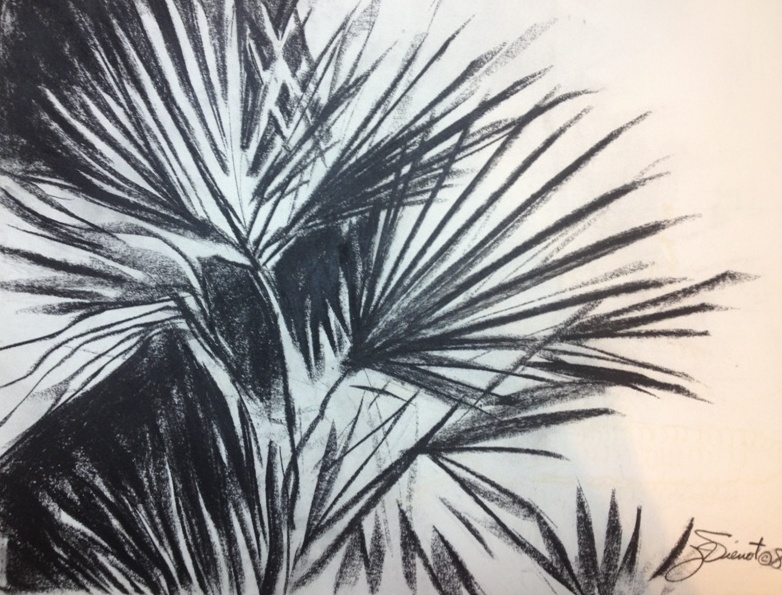|
|
Coastal Georgia was a beautiful place to be, last week. I drove from my home in Northwest Florida to St. Simons Island for a plein air painting working with Laurel Daniel, a fabulous artist whose work I have been watching for years, following her blog even before I ever decided to try plein air painting. Laurel is a master at ‘definitive suggestion’ in her work, leaving out just enough of the smaller details which invites the viewer to participate. I am a fan of this kind of work, because the longer the viewer will look at the piece, the more they will appreciate it, and not just see it and walk away.
|
|
|
|
 |
 |
Laurel worked hard for us, teaching us to show distance by muting intensity and tapering values to mid-range, but her primary focus was teaching us to block-in the basic shapes and values before getting down to the business of painting. Each day she demo’d a different way of blocking-in, before painting luscious scenes “From Marsh to Seaside.” Her three block-in methods include dry brush sketch in a dark neutral; mid-toning with a neutral and then wiping out lighter values and adding darks; and the most difficult, blocking in with true colors at correct value. Laurel put the dark elements in the painting first, leaving the lighter values for later. Her reasoning was to get down the shadow patterns first, so that we would be able to hold onto them throughout the painting, because the light and shadows change throughout the two hours you are painting. In this location, the tide changed as well. A marsh full of water might be nearly bone dry by the time you were finishing a painting, so what started out to be a pattern of light on water, could be dark mudflats by the time you finished. Laurel blogged about her workshop at http://www.laureldaniel.blogspot.com/2014/05/marshside-palms-demo-georgia-workshop.html. We were treated to an opening of Laurel’s works at Anderson Fine Art Gallery on St. Simons Island on Friday evening, midway through the workshop. There were a lot of red dots on the labels by the end of the evening, indicating “SOLD”. I would have loved to have brought one home with me, but it already had a red dot on it, sold before I arrived. I was happy to see works by other amazing artists in the other rooms of the gallery, including Morgan Samuel Price from whom I took a workshop in April. On the last day of the workshop, my muted phone started buzzing while I was shooting some progress photos of the instructor’s demo — it was Joe Taylor calling, the organizer of the Forgotten Coast en Plein Air. I will be attending a workshop by Ken Dewaard and Greg LaRock after that event, so I thought it might be some details about that. But no. Joe started by asking me if I had received his email, and I drew a blank. I went from confusion to shock, when he said he had emailed me to ask if I would like to be one of the students in a pilot workshop that is being designed as Advanced Plein Air for the Apalachicola School of Art. I managed to compose myself enough to say Yes! So I will be taking 2 workshops, back-to-back, next week. When I set the intention of taking as many plein air workshops as I could afford this year, I didn’t know that I would be getting more workshops than I can afford! (This one will be free!) I am delayed in getting this blog posted. We had a flooding rainstorm that shut down the entire Florida Panhandle, closing roads and bringing everything to a standstill. About 2 feet of rain fell in a 24-hour period. I was fortunate that my home and business did not suffer any damages, other than a sign blown down. Many others are not so fortunate. The same storm spawned killer tornados in other states. Nevertheless, it kept me from getting back into the studio to practice my new awareness gained from Lasurel Daniel’s workshop. Here’s a quick video of the bridge over the slow moving swamp I cross every day, a half-mile from my home. http://youtu.be/3cGH-p9XM00






















